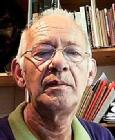Holland tubes, the Netherlands
Holland tubes, the Netherlands

Holland
N.V. Metaaldraadlampenfabriek Holland
(Holland Metal Lamp Manufacturing Co.)
Merwedekade 33
Utrecht, The Netherlands
History of Holland
Holland was founded on 18-12-1913. The company made metal wire lamps, but the company did not perform very well and on 25-7-1917 the Extraordinary General Meeting of Shareholders decided to liquidate the company. During this process in early November 1917, the director of the company, T.F. Egidius, was asked by the Dutch Ministry of War to develop a Dutch tube. As a result of this, the company was re-established.
On January 1923 all the shares were paid for, the existing commissioners were discharged and the director Egidius became commissioner. The factory manager K.M.E. Schuurman became director. Besides Egidius two Germans became commissioners namely Herbert Plechati and Kurt Auer, both living in Berlin. As attorney, Sophie C. Dobrynski a German lady also living in Berlin was appointed. But on 26-7-1923 Plechati and Auer were discharged and Dobrynski was discharged on 24-4-1926. Was this an attempt of the Auer Gesellschaft to get a foothold on what Philips claimed as its home market and did Philips counter-act? Well, who knows!
On 18-6-1927 Egidius resigned and the Statutes were changed on 4-7-1927. Finally Holland fell into the hands of speculators, with the company going into liquidation on 1-5-1928.
The radio tubes from “Holland”
The Holland tube and its development
This tube was made on request of the Dutch Ministry of War early November 1917 and Lieutenant Tolk was assigned to the task of supervising this secret project. The Netherlands was neutral during the First World War and had interned a German sea plane which had a Telefunken amplifier on board with two EVN94 tubes. One of these tubes was used as an example. Due to the fact that Tolk kept a diary we know something about the development. In this diary tests are also recorded; the main problems were the short lifespan of these tubes and the “blue glow” inside the tubes when too high an anode voltage was applied indicating the tubes had a poor vacuum. In mid December 1917 the idea was born to make a tube with cylindrical grid and anode and all we know about this tube is that some examples were made but had to get their vacuum on 1-1-1918 and were supplied to the Dutch Navy mid January 1918.
Because this tube was a military secret, there are no pictures or data for this tube. We know it was double ended and had a cylindrical anode. But how did it look like? For the answer we have to turn to Radio Bussum and its Erbee tube.
Radio Bussum made receivers with double-ended (Edison 14 bases) tubes with cylindrical anode at the end of 1918 and the beginning of 1919. Radio Bussum advertised also the Erbee tube in the period March – July 1920, which was also a double-ended tube with cylindrical anode. Radio Bussum was a set and radio parts manufacturer, not a tube manufacturer. Who was the manufacturer of this tube?
There were only two early Dutch double-ended tubes with cylindrical anode. The Heussen type LVB and the Holland tube. The Erbee was certainly not a Heussen LVB. So it must be a Holland tube.
The Holland tube was already outdated when the Philips Ideezet came available in June 1918. The Holland tube was a low vacuum tube and the Philips Ideezet was available in June 1918, had a small amount of argon gas inside, which made it a more sensitive detector.
Other tubes made by Holland
The Radivac was advertised for the first time in January 1925. In April 1925 a miniwatt version was available, the Radivac DE. The Radispar was advertised for the first time in September 1925. The Radivac, the Radivac De and the Radispar were universal tubes. That means that the tube could be used as detector and for LF and HF amplification. With increased filament and anode voltage they could also be used to drive a small loudspeaker.
The Stangold tube was advertised for the first time in November 1927. There are two Stangold’s; the type DE146, to be used as detector and for LF and HF amplification and the type PV418 as an output tube.
To thank the Author because you find the post helpful or well done.